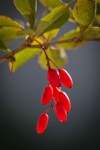Notice (8): Undefined index: geoplugin_countryCode [APP/Controller/AppController.php, line 94]Code Context$Country_code = '';if($ip_data && $ip_data['geoplugin_countryCode'] != null) {$Country_code = $ip_data['geoplugin_countryCode'];$client = null $forward = null $remote = '216.73.216.183' $ip = '216.73.216.183' $ch = unknown $ip_data_in = '{ "geoplugin_status":429, "geoplugin_message": "Blacklisted due to sending too many requests to geoplugin.net. Consider whitelisting your IP or domain", "geoplugin_url": "https://www.geoplugin.com/premium/" } ' $ip_data = [ 'geoplugin_status' => '429', 'geoplugin_message' => 'Blacklisted due to sending too many requests to geoplugin.net. Consider whitelisting your IP or domain', 'geoplugin_url' => 'https://www.geoplugin.com/premium/' ] $Country_code = ''App\Controller\AppController::initialize() - APP/Controller/AppController.php, line 94 App\Controller\ProductsController::initialize() - APP/Controller/ProductsController.php, line 31 Cake\Controller\Controller::__construct() - CORE/src/Controller/Controller.php, line 273 ReflectionClass::newInstance() - [internal], line ?? Cake\Http\ControllerFactory::create() - CORE/src/Http/ControllerFactory.php, line 47 Cake\Http\ActionDispatcher::dispatch() - CORE/src/Http/ActionDispatcher.php, line 91 Cake\Http\BaseApplication::__invoke() - CORE/src/Http/BaseApplication.php, line 235 Cake\Http\Runner::__invoke() - CORE/src/Http/Runner.php, line 65 Cake\Http\Runner::__invoke() - CORE/src/Http/Runner.php, line 65 Cake\Http\Middleware\CsrfProtectionMiddleware::__invoke() - CORE/src/Http/Middleware/CsrfProtectionMiddleware.php, line 104 Cake\Http\Runner::__invoke() - CORE/src/Http/Runner.php, line 65 Cake\Http\Runner::run() - CORE/src/Http/Runner.php, line 51 Cake\Routing\Middleware\RoutingMiddleware::__invoke() - CORE/src/Routing/Middleware/RoutingMiddleware.php, line 168 Cake\Http\Runner::__invoke() - CORE/src/Http/Runner.php, line 65 Cake\Routing\Middleware\AssetMiddleware::__invoke() - CORE/src/Routing/Middleware/AssetMiddleware.php, line 88 Cake\Http\Runner::__invoke() - CORE/src/Http/Runner.php, line 65 Cake\Error\Middleware\ErrorHandlerMiddleware::__invoke() - CORE/src/Error/Middleware/ErrorHandlerMiddleware.php, line 96
| Scientific: | Berberis vulgaris |
|---|---|
| Other: | Barberry |
| Family: | Berberidaceae |
Barberry contains berberine and other isoquinoline alkaloids responsible for its bitter taste and also its antimicrobial properties. As a digestive bitter, herbalists use barberry to improve digestive function to treat indigestion, gallstones and liver disease. Also, it's particularly useful for infections of the digestive tract including diarrhea caused by both bacteria and parasites. Research suggests the presents of flavonolignans in barberry inhibit multi• drug resistant pumps thereby working synergistically with berberine to over• come drug• resistant infections. Also, the flavonolignans possess hepatoprotective properties making them useful for liver diseases like hepatitis.
Most of the clinical trials conducted use berberine extracts rather than the herb. Berberine has shown benefit against diarrhea• predominant Irritable Bowel Syndrome (IBS-D) and associated micro• organism including Enterotoxigenic Escherichia coli (ETEC) diarrhea and giardia. Also, several studies suggest that berberine may improve blood sugar levels and may be useful in diabetes. Berberine inhibits cholesterol synthesis and may aid in heart disease. Human trials show it lowers liver enzymes and may be valuable in the treatment of non• alcoholic fatty liver disease (NAFLD).
Infection
• bacteria
• yeast
• viruses
• parasites
Gastrointestinal
• atonic digestive complaints
-
- • dyspepsia
-
- • hypochlorhydria
• gastric ulcer
• colitis
• infectious diarrhea
Hepatobiliary
• conditions related to cholestasis:
• cholelithiasis (gallstones)
• cholecystitis
• biliary dyskinesia
Dermatologic
• alterative for chronic skin conditions especially when associated with poor digestion and elimination causing bad blood
• hives
• eczema
• psoriasis
• acne
Metabolic
• diabetes
• high cholesterol
• non-alcoholic fatty liver disease (NAFLD )
• Bitter
• Stomachic
• Hepatic
• Cholagogue
• Choleretic
• Alterative
• Mdr Pump Inhibitor
• Antimicrobial
• Antibacterial
• Antifungal
• Antiparasitic
• Antileishmanial
• Antiinflammatory
• Hepatoprotective
• Laxative (Mild)
• Emmenagogue
• Isoquinoline Alkaloids (E.g. Hydrastine, Berberine)
• Flavonolignans
• Tincture (1:5 in 60% EtOH): 1• 2 ml tid
• Decoction (dried root): 1 tsp tid
Contraindications: Pregnancy and lactation (uterine stimulant). Berberine is considered teratogenic.
Caution: Hypertension, gastritis, peptic ulcers.
Hypertension: Caution use due to hypertensive and hypotensive effects; monitor BP regularly.
†Gastritis, peptic ulcers: Stimulation of gastric secretions can irritate inflamed mucous membranes; concomitant ingestion of demulcent herbs can help prevent aggravation.
• MDR pump inhibitors • contains a flavolignin that inhibits multi• drug resistance pumps, which are responsible for making bacteria resistant to certain antibiotics and cancer resistant to specific chemotherapeutic agents. Therefore it may be a good adjunctive herb to prevent and/or overcome drug resistance.
• Barbiturate • may potentiate their effects.
Barnes J, Anderson LA, Phillipson JD. Herbal Medicines, 3rd ed. London: Pharmaceutical Press, 2007.
Bone K. Principles and Practice of Phytotherapy. Edinburgh: Churchill Livingstone, 2000.
Bone K. A Clinical Guide to Blending Liquid Herbs: Herbal Formulations for the Individual Patient. St Louis, MO: Churchill Livingstone, 2003.
Brinker F. The Toxicology of Botanical Medicines, 3rd ed. Sandy, Oregon: Eclectic Medical Publications, 2000.
Felter HW, Lloyd JU. King's American Dispensatory. 1898. http://www.ibiblio.org/herbmed/eclectic/kings/main.html. Accessed: August 19, 2006.
Hoffman D. Medical Herbalism. Rochester, Vermont: Healing Arts Press, 2003.
Weiss RF. Herbal Medicine. Beaconsfield, England: Beaconsfield Publishers Ltd, 1988.
Williamson EM, ed. Major Herbs of Ayurveda. Edinburgh: Churchill Livingstone, 2002
Disclaimer: This content is subject to change. The information is intended to inform and educate; it does not replace the medical evaluation, advice, diagnosis or treatment by a healthcare professional. www.nhpassist.com © 2014 NDAssist Inc. and/or its affiliates. All rights reserved.

|
Barberry
SummaryBarberry contains berberine and other isoquinoline alkaloids responsible for its bitter taste and also its antimicrobial properties. As a digestive bitter, herbalists use barberry to improve digestive function to treat indigestion, gallstones and liver disease. Also, it's particularly useful for infections of the digestive tract including diarrhea caused by both bacteria and parasites. Research suggests the presents of flavonolignans in barberry inhibit multi• drug resistant pumps thereby working synergistically with berberine to over• come drug• resistant infections. Also, the flavonolignans possess hepatoprotective properties making them useful for liver diseases like hepatitis. IndicationsSign in requiredActionsSign in requiredConstituentsSign in requiredPosologySign in requiredSafetySign in requiredInteractionsSign in requiredReferencesSign in required |
|---|